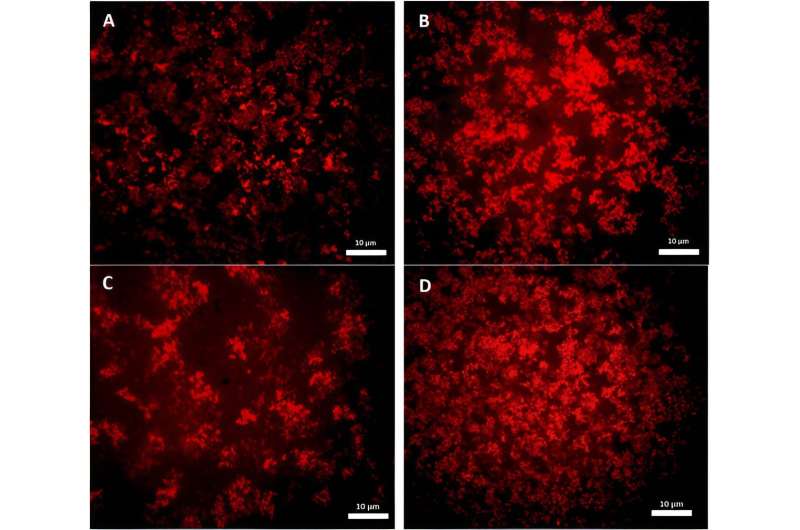This article has been reviewed according to Science X's editorial process and policies. Editors have highlighted the following attributes while ensuring the content's credibility:
fact-checked
trusted source
proofread
Study reveals new insights into yogurt production with microbial transglutaminase and exopolysaccharides

In a stride towards enhancing the quality of yogurt products, researchers from University of Chemistry and Technology, Prague have uncovered exciting findings that shed light on the combined impact of microbial transglutaminase (MTG) treatment and exopolysaccharides (EPS) on the rheological and microstructural properties of yogurt.
In a study that promises to transform the texture and quality of yogurt, researchers have explored the combined effects of microbial transglutaminase (MTG) treatment and exopolysaccharides (EPS) on the rheological and microstructural properties of this beloved dairy product. The results, published recently in the International Dairy Journal, shed light on an innovative approach to enhancing yogurt's consistency, viscosity, and overall sensory experience.
The study delved into the intricate interplay between MTG, EPS, and the fermentation process in shaping yogurt's properties. The researchers aimed to understand how these elements, when introduced at different stages of production, impact the final texture and structure of yogurt.
"The experiment involved treating milk with transglutaminase both prior to fermentation and simultaneously with a yogurt culture. Fermentations were conducted at two different temperature ranges: short-term fermentation at 42°C for 6-8 hours and long-term fermentation at 30°C for 16–18 hours," stated Stěpán Marhons, the corresponding author of the study. The team used two distinct yogurt cultures—one that produces EPS and another that does not—to observe the contrasting effects of EPS presence.
The findings of the study revealed remarkable transformations in the yogurt's properties. Treatment with transglutaminase alone led to an increase in gel strength and viscosity. However, the most notable effects were observed when MTG and the yogurt culture were applied simultaneously. This dual approach resulted in a more substantial enhancement of these textural attributes.
Exopolysaccharides, naturally occurring polymers secreted by microorganisms, further elevated the positive impact of MTG. These substances played a pivotal role in augmenting gel strength and viscosity, setting the stage for a remarkably improved sensory experience for consumers.
One of the most intriguing outcomes of the research was the alteration in protein structures within the yogurt matrix. The introduction of MTG and EPS contributed to the development of new three-dimensional protein structures. These reconfigured structures led to a reduction in the size of pores between protein chains, significantly enhancing the yogurt's ability to retain water. Consequently, the unwanted phenomenon of syneresis—whey separation—was curtailed, ensuring a smoother, more consistent product.
Furthermore, the ropiness that is sometimes observed in yogurts rich in EPS was considerably minimized through MTG treatment. This breakthrough contributed to an enhanced acceptability of the yogurt's texture, making it more palatable and enjoyable for consumers.
The implications of this research are immense, as it paves the way for a revolution in yogurt production techniques. The combination of microbial transglutaminase and exopolysaccharides holds the potential to create yogurts with superior texture, improved water-binding properties, and reduced syneresis. This not only satisfies consumer preferences but also has the potential to extend the shelf life of the product.
As the food industry continues to evolve, this study stands as a testament to the power of scientific innovation in redefining everyday products. The findings offer both consumers and manufacturers an exciting glimpse into the future possibilities of yogurt production, where texture and quality reach new heights.
In summary, the research underscores the transformative influence of microbial transglutaminase and exopolysaccharides on yogurt's rheological and microstructural properties. This study provides a remarkable avenue for revolutionizing the yogurt industry, offering consumers a tantalizing taste of what's to come.
More information: Stěpán Marhons et al, Properties of yoghurt treated with microbial transglutaminase and exopolysaccharides, International Dairy Journal (2023). DOI: 10.1016/j.idairyj.2023.105701
Provided by University of Chemistry and Technology Prague



















